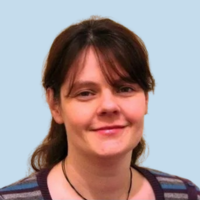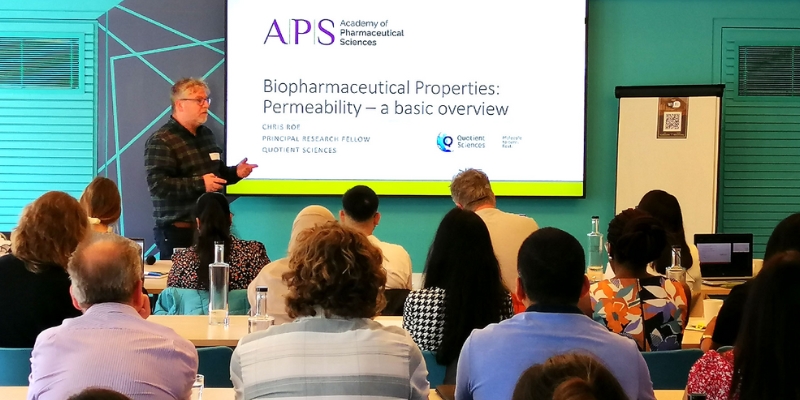As pharmaceutical companies increasingly seek to address areas of unmet medical need, especially for orphan and rare diseases, the ongoing trend of highly potent and complex small-molecule drug candidates continues to rise. With so many of these new chemical entities (NCEs) on expedited regulatory approval pathways, there is high demand for customers and contract drug development and manufacturing organizations (CDMOs) to meet ever-shorter timelines and reduce costs while avoiding common pitfalls on the development pathway.
In this article, we talk to Eleanor Row, Executive Director of Commercial at Quotient Sciences, about the challenges facing drug developers today in getting their molecule to the key milestone of an Investigational New Drug Application (IND), what the different drug development functions should be thinking about at this stage, and how an integrated approach can help to accelerate your molecule’s pathway to IND and beyond.
What are the main challenges facing drug developers today in getting their molecule to IND?
The first challenge in any drug development program is choosing the optimum molecule to move forward into clinical development from a range of potential leads. At this stage, lead candidates will be ranked based on their early biopharmaceutical ‘developability’, in-vitro activity, and ability to demonstrate acceptable specificity and selectivity for the biological target of the desired therapeutic area.
Having selected a good lead candidate, the next goal is to complete all of the necessary chemistry, manufacturing, and controls (CMC) development and safety studies that will support regulatory approval to begin a Phase I clinical trial in humans. As well as presenting an acceptable pharmacokinetic (PK) profile and demonstrating in-vivo efficacy, it becomes important to show that the candidate drug has a good safety pharmacology margin with an acceptable drug-drug interaction (DDI) profile. Access to increasing quantities of drug substance becomes more critical at this stage and focus shifts from synthesizing small amounts of material from medicinal chemistry routes to the development of a scalable synthetic process and provision of the first kilogram of Good Manufacturing Practice (GMP)-grade material suitable for early clinical development.
What should drug substance decision-makers be thinking about at this stage?
When developing a drug substance manufacturing process, optimization of the synthetic route is key. It is essential to do this early in development, as changes to the route at a later date can be time consuming and may require additional bridging toxicology studies due to differences in the impurity profile.
Designing a synthetic process that is robust and commercially scalable helps to avoid some common issues that can add risk to material supply. At this stage, it is important to optimize the process by minimizing the number of steps (either by telescoping or identifying commercially available starting materials with a robust supply chain), developing simple purification and isolation strategies, and eliminating the use of hazardous reagents or intermediates (particularly genotoxic impurities (GTIs)). Considering the impurities that are produced is as important as the drug substance itself, and by performing analytical method development in parallel to the development of the synthesis, impurities can be readily identified and quantified. This provides a good understanding from a very early stage of development about the fate of impurities and control points within the synthesis. It also helps to reduce timelines, enabling non-GMP demonstration batches to be started as soon as the synthetic methodology is available, along with the initiation of stability studies once material is available to support the clinical shelf life and pivotal data for the CMC dossier submission.
The long-term regulatory strategy and identification of potential GMP starting materials appropriate to the development stage is also key, and regulatory starting materials (RSM) should be chosen to allow a sufficient number of stages to be performed under GMP to demonstrate control over the drug substance quality. Changing starting materials at a later stage in clinical development to meet the increased regulatory requirements may cause additional costs and delays, as additional clinical studies may be needed to prove that changes in starting materials do not change the toxicology or impurity profiles of the final material.
Finally, and often overlooked during early development, is selection of the right physical form. Making the right decisions early can lead to a more robust drug substance isolation strategy and formulation, resulting in reduced drug product development timelines. Defining the desired salt form (or free form) of the molecule earlier in the project also has the advantage that there is no need to carry out bridging toxicology or stability studies further downstream. It can also lead to a much stronger intellectual property (IP) position.
What considerations should drug product and CMC teams be aware of at this stage in terms of dosage form development?
Understanding the physical form and the molecule's behavior is key when trying to design a formulation for the clinic. Technology selection is based on the solubility and permeability of a compound utilizing the Developability Classification System (DCS), so the sooner that this data is available to a formulation team, the shorter the lead time to a developed formulation. The use of a relatively simple, ‘fit-for-purpose’ formulation during an early clinical evaluation program is a tried and tested solution, which offers significant benefits in terms of time and expense compared to alternative strategies. In addition, it provides significant flexibility in terms of the doses to be administered during early clinical programs where, due to their nature, dosing regimens have not yet been fully defined.
Why is it important for chemistry, CMC, and clinical groups to be engaged with one another at this early stage of development to ensure downstream success?
Typically, drug substance, drug product, and clinical activities are carried out by separate organizations, which can be inefficient and costly, leading to poor knowledge and material transfer, thus increasing the risk of delays in the program timeline. At Quotient Sciences, through our Translational Pharmaceutics® platform, we have the unique ability to integrate drug substance, drug product, and clinical testing activities, all under one organization and a single program manager. Our integrated approach to drug development means that process development, analytical, and formulation development chemists can interact regularly with each other from the outset of the project. Data and drug substance information are freely shared, meaning that activities that would usually only initiate on completion of the drug substance program can begin several months earlier. On average, drug development timelines are reduced by 3–6 months in the candidate development stage by utilizing an integrated approach, which translates into significant R&D cost savings. Our collective experience ensures a smooth review by regulators, accelerating clinical trial approval. The overall benefit is a significant reduction of drug development timelines from candidate selection to clinical development, enhancing the likelihood of clinical and commercial success and reducing the overall program risk.
What should clinical operations teams be focused on at this stage of the development cycle?
As a molecule approaches the IND transition, there are many unknowns that will influence its future success. Success in clinical terms is often linked to early establishment of efficacy, with the current trend to bring patient investigations into the first clinical protocol. However, the practicalities of enabling such a study design can often result in a significant deceleration for the first dose in human milestone, a critical event to confirming real drug exposures, which will ultimately drive the efficacy question. Clinical operations teams should therefore focus their attention on answering the critical questions of ‘today’ in their molecule’s development, with an eye to future pivotal efficacy investigations, but not allow the ultimate prize to delay the collection of decision-making data.
How can an integrated program help to accelerate your molecule’s pathway to IND?
Drug developers face many challenges when bridging from drug discovery into pre-clinical and clinical development, often having to split their program across multiple service providers. This places the project management burden on them, creates white space in the development timeline, limits knowledge and material sharing, and is ultimately time-consuming and costly. At Quotient Sciences, through our uniquely integrated Translational Pharmaceutics platform, our customers benefit from holistic scientific advice and recommendations. We work in multi-disciplinary project teams, offering unique CMC, clinical, and biopharmaceutics know-how and capabilities all within one team. Projects are data-driven and led by the science. Through tight integration of early development activities under a single organization, we can cut through traditional industry silos, which accelerates timelines and ultimately gets medicines to patients faster.
For more insights into how you can accelerate your molecule towards your next pivotal regulatory milestone, visit our page on Drug Development.
Drug discovery partner









